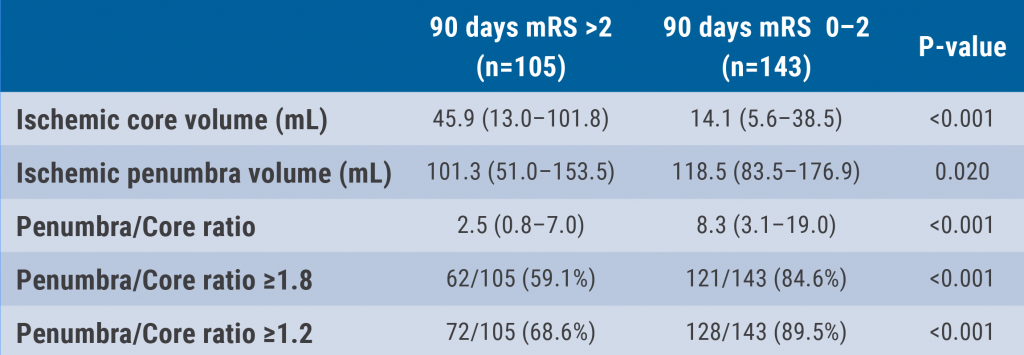 Patients receiving dapagliflozin, a sodium-glucose cotransporter-2 (SGLT2) inhibitor, demonstrated reduced risk of cardiovascular death and HF hospitalisation [2]. Dr. Prasad and colleagues aimed to analyse the effect of dapagliflozin on the heart and left ventricular remodelling in patients with HFrEF, to expand the evidence on the efficacy of this agent.
Patients receiving dapagliflozin, a sodium-glucose cotransporter-2 (SGLT2) inhibitor, demonstrated reduced risk of cardiovascular death and HF hospitalisation [2]. Dr. Prasad and colleagues aimed to analyse the effect of dapagliflozin on the heart and left ventricular remodelling in patients with HFrEF, to expand the evidence on the efficacy of this agent.For this purpose, a meta-analysis of randomised controlled trials was conducted. The primary outcomes were stroke volume and LVMI. Secondary outcome measures included LAVI, left ventricular end systolic volume (LVESV), and left ventricular end diastolic volume (LVEDV). Outcome data were extracted from echocardiograms and cardiac magnetic resonance imaging.
The meta-analysis included 4 randomised controlled trials, in which a total of 254 patients was assessed over a median follow up duration of 13.3 months. Patients with HFrEF receiving dapagliflozin demonstrated significantly higher SVs (mean difference +1.85 ml/heartbeat; 95% CI 0.10-3.60) than patients who were not treated with dapagliflozin. Other outcome measures did not reveal significant benefits for participants treated with dapagliflozin over control participants: LVMI mean difference with control group -0.15; LAVI +0.50; LVESV -1.00; LVEDV +2.81.
Notably, the recent IDDIA trial (NCT02751398) demonstrated that a treatment regimen of dapagliflozin plus antihyperglycemic medications was associated with improved LV diastolic function and decreased LV filling pressure in patients with type 2 diabetes mellitus [3]. The current meta-analysis only displayed a significant benefit of dapagliflozin regarding SV. In addition, only 4 randomised controlled trials could be included, resulting in a low power of this meta-analysis. Therefore, larger randomised controlled trials are needed to unravel the effect of the SGLT2-inhibitor dapagliflozin on left ventricular remodelling and other heart outcomes.
Medicom asked Dr Prasad some questions:
Medicom: what question instigated this study?
“SGLT2 inhibitors have shown a clear risk reduction of heart failure hospitalisation in diabetic patients, suggesting that SGLT2 inhibitors play a key role in the improvement of cardiac function in diabetic cardiomyopathy. More recently, DAPA-HF reported that dapagliflozin improved cardiovascular outcomes among patients with HFrEF regardless of diabetic status, therefore SGLT2 inhibitors have been expected to maintain pharmacological action beyond its use as an antidiabetic drug. We wanted to elucidate the effect of SGLT2 inhibitors on cardiovascular event reduction, and felt it was important to clarify the mechanisms contributing to the cardioprotective effect of SGLT2 inhibitors, in order to understand the underlying pathophysiology. We therefore tried to pull together the randomised controlled trials that evaluated and compared pathophysiology components. We knew about the effects and clinical outcomes – the decreased morbidity and mortality, and the decreased cardiovascular events from these drugs. What we didn’t know was whether it affected the left heart, the right heart, or the atriums, so that was what we were trying to figure out here.”
Medicom: What was the take-home message?
“The main result was that dapagliflozin increased the stroke volume in HFrEF patients, however it had an insignificant effect in the other left ventricular remodelling outcomes measured in these trials.
“The fact that the stroke volume is increased is definitely indicative that there is something happening, but our results do not entirely point us to what the exact effect is. It should be noted that most of those cardiac modelling outcomes were determined by echocardiogram, and whether that was trans-thoracic or trans-oesophageal, that remains undetermined. That could signify that the methodology may not have been adequately sensitive to always detect other changes. However, the left ventricular mass index was determined by cardiac imaging. Additionally, another limitation was that this meta-analysis was confined to only 254 HFrEF patients.”
Medicom: What now?
“I would like to see further trials that evaluate patients taking SGLT2 inhibitors and have larger sample sizes and longer follow-ups. Comparing dapagliflozin with empagliflozin in HFrEF patients, for example, would be very interesting to determine which inhibitor works best, and in which patients, both for cardiac remodelling outcomes as well as the usual cardiovascular endpoints.”
- Prasad RM, et al. Meta-analysis Evaluating Dapagliflozin in Heart Failure Reduced Ejection Fraction: A Focus on Left Ventricular Remodeling. P1888, AHA 2021 Scientific Sessions, 13-15 November
- Zheng XD, et al. American Journal of Cardiovascular Drugs. 2021; 21:321-330
- Shim CY, et al. Circulation. 2021;143:510-512
Copyright ©2021 Medicom Medical Publishers
Posted on
Previous Article
« Shortcomings and solutions for the management of young patients with hypercholesterolemia Next Article
Improved QoL with axi-cel versus standard-of-care in R/R LBCL »
« Shortcomings and solutions for the management of young patients with hypercholesterolemia Next Article
Improved QoL with axi-cel versus standard-of-care in R/R LBCL »
Related Articles


August 22, 2022
Acute stroke management: from time window to tissue window?
© 2024 Medicom Medical Publishers. All rights reserved. Terms and Conditions | Privacy Policy
HEAD OFFICE
Laarderhoogtweg 25
1101 EB Amsterdam
The Netherlands
T: +31 85 4012 560
E: publishers@medicom-publishers.com

